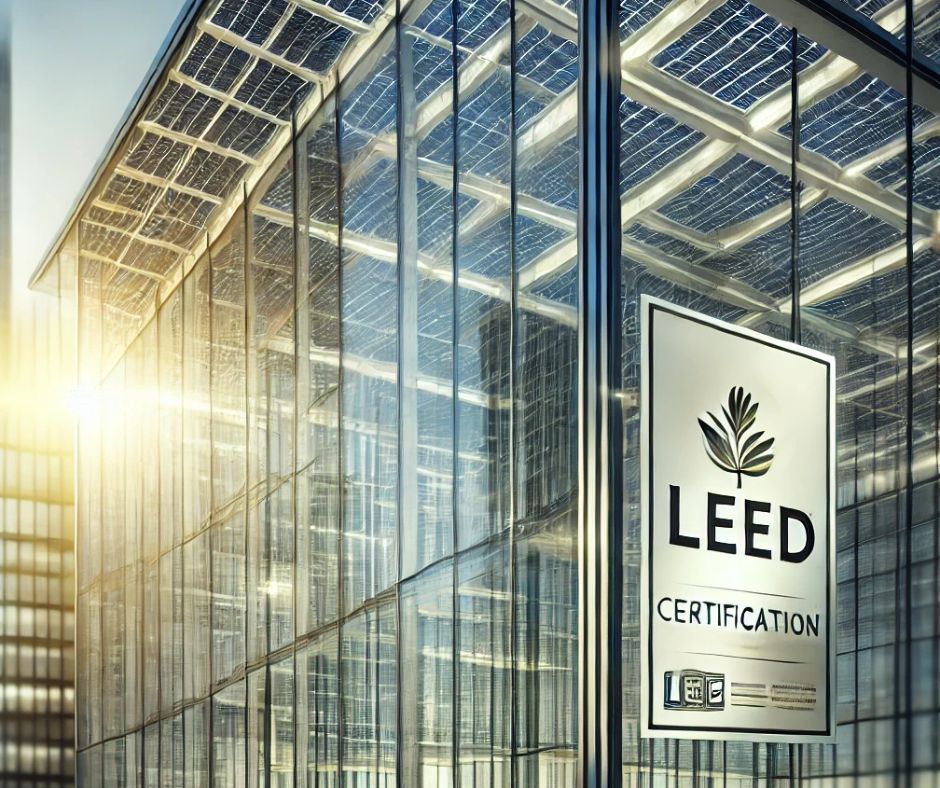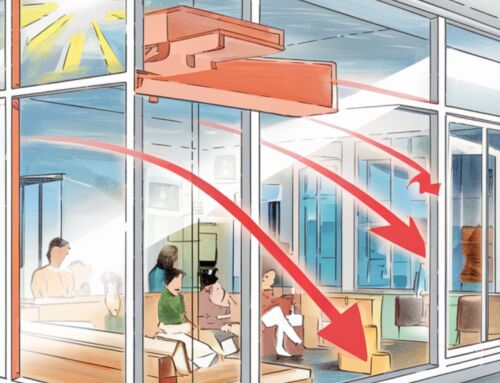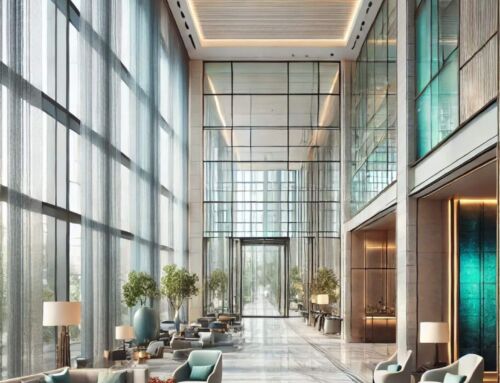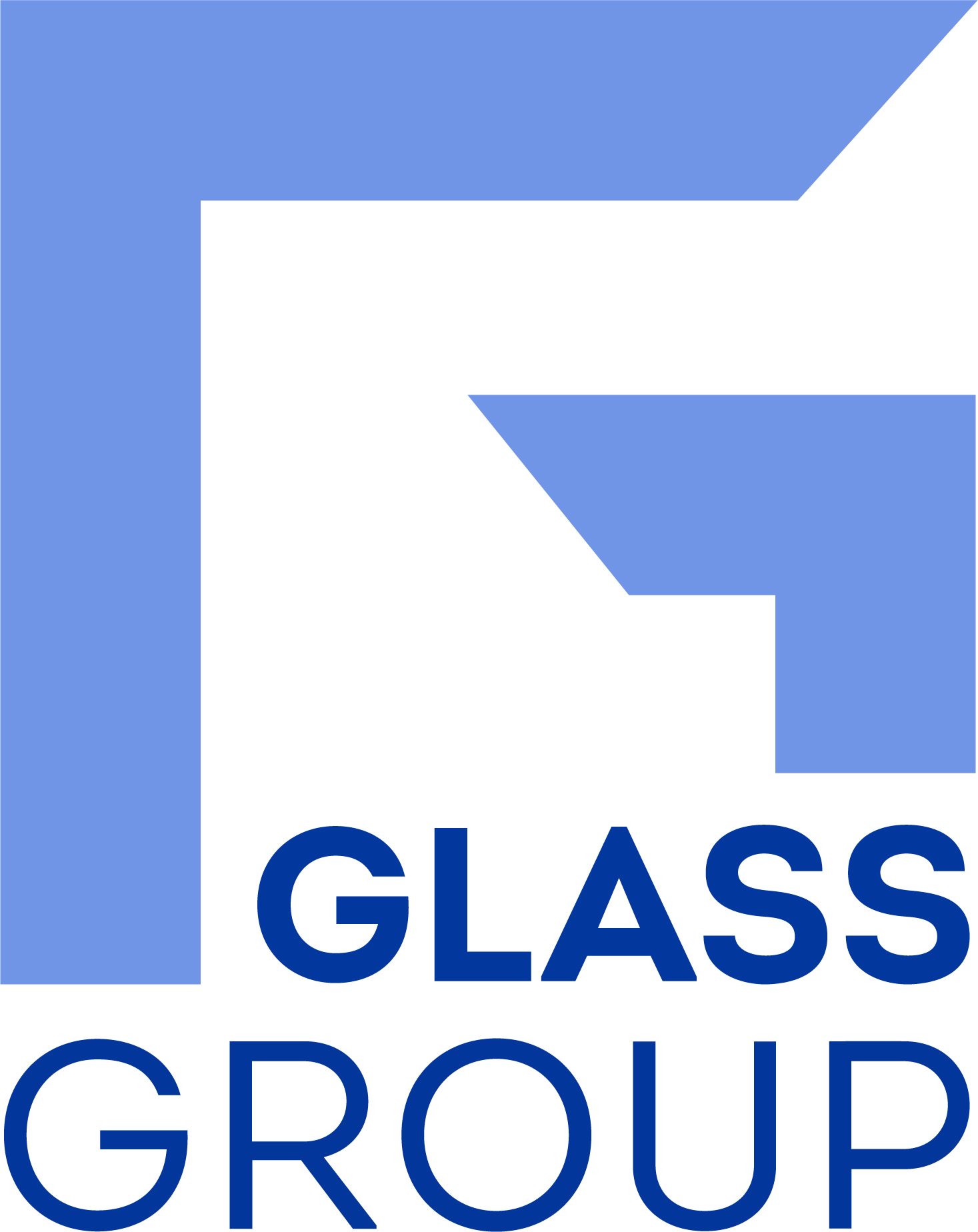As environmental sustainability takes center stage in construction, terms like LEED certification are becoming more prevalent. Although often seen as a new trend, LEED (Leadership in Energy and Environmental Design) has been a standard in the United States since 1998, and its growing association with sustainable design has brought it into the spotlight once again.
At Nuova Vetreria Valmarecchia, sustainability is a core value. In this article, we’ll explain what LEED certification entails, why it’s important, and how glass plays a vital role in achieving these standards in Northern European markets.
What Is LEED Certification?
LEED is an internationally recognized system for evaluating the energy efficiency and environmental impact of buildings. Created by the U.S. Green Building Council (USGBC), it provides a framework for sustainable construction by assessing various aspects of design, construction, and building management.
Introduced in Italy in 2009, LEED aligns with local and national regulations for sustainable building practices. While not mandatory under European or Italian law, it is increasingly used to enhance energy efficiency and meet broader environmental standards.
Who Issues LEED Certification?
LEED certification is awarded by the Green Business Certification Inc. (GBCI), the only globally authorized body for this accreditation. The process involves stringent criteria developed and reviewed by over 10,000 organizations within the U.S. Green Building Council.
In Northern European countries, various organizations and governmental bodies promote sustainable building practices, often adhering to standards like BREEAM or LEED.
Buildings are evaluated across various domains, such as energy consumption, indoor air quality, and water resource management, with scores translating into different certification levels:
- Certified
- Silver
- Gold
- Platinum
How to Achieve LEED Certification
The path to LEED certification involves several key steps, requiring meticulous planning and execution:
- Design Phase: the project must adhere to LEED guidelines, integrating mandatory sustainability requirements.
- Construction Phase: builders must apply LEED-approved methods to ensure compliance with environmental standards during execution.
- Documentation: detailed reports are required to demonstrate that the project meets LEED criteria.
- Review and Certification: the GBCI reviews submitted documentation and assigns a certification level based on the credits earned.
LEED credits can be accumulated in areas such as energy efficiency, use of sustainable materials, and resource management, leading to higher certification levels and a stronger sustainability profile.
By getting LEED certified, you’re showing the world you’re serious about sustainability.
LEED certification ensures sustainable buildings, minimizing environmental impact and maximizing energy efficiency, creating healthier and more sustainable spaces for all.

Why LEED Certification Matters Today
Although not a legal requirement, LEED certification is becoming increasingly relevant due to evolving European regulations on energy efficiency and sustainable construction. It represents an official recognition of a building’s environmental performance, adding significant value in the real estate market.
A LEED-certified building signals a commitment to sustainability, appealing to environmentally conscious investors, tenants, and users. It also helps developers and architects align their projects with global sustainability goals, making it a critical consideration for modern construction.
LEED-Certified Buildings in Italy: a Showcase of Sustainability
Italy, with its rich architectural heritage, is making significant strides in sustainable building. The country is home to nearly 300 LEED-certified buildings, demonstrating a harmonious blend of historical preservation and innovative green design.
Leading Examples of LEED-Certified Buildings in Italy
How Vetreria Valmarecchia Supports LEED Projects
Nuova Vetreria Valmarecchia is proud to contribute to the growth of LEED-certified buildings in Italy and across Northern Europe. We offer a range of high-quality glass solutions tailored to meet the rigorous sustainability standards of LEED certification.
Our key Glass Solutions for LEED Projects:
- Photovoltaic Transparent Glass: combining energy generation and aesthetics, our photovoltaic glass provides a sustainable solution for architects seeking to maximize LEED credits.
- Custom Insulated Glass: our custom insulated glass solutions enhance thermal performance, reducing energy consumption and contributing to a building’s overall environmental impact.
- Expert Consultation: our team provides expert guidance and support throughout the LEED certification process, from initial design to final certification. We collaborate closely with architects, builders, and developers to ensure that our glass solutions align with project-specific requirements.
By partnering with Vetreria Valmarecchia, you can achieve your LEED certification goals while enhancing the aesthetic appeal of your building.
Glass and LEED Certification: a Winning Choice
Glass is more than just an aesthetic feature—it’s a sustainability powerhouse. Modern glass solutions contribute to LEED certification by improving energy efficiency, enhancing natural light, and integrating renewable energy technologies.
Why Glass is essential for Sustainable Design
Sustainability is no longer optional; it’s an expectation in Northern Europe’s construction market. Glass aligns perfectly with this demand due to its:
- Recyclability: glass can be recycled indefinitely without losing its quality, making it an eco-friendly material choice.
- Energy Efficiency: by improving insulation and reducing energy usage, glass contributes to a building’s overall sustainability.
- Aesthetic Versatility: glass allows architects to balance functionality with cutting-edge design, creating buildings that are both sustainable and visually striking.
Conclusion
LEED certification is a powerful tool for advancing sustainability in the built environment, providing a clear standard for energy-efficient and environmentally friendly construction. At Vetreria Valmarecchia, we are committed to supporting your journey toward LEED certification with innovative glass solutions tailored to the demands of modern architecture.
Whether you’re aiming for a Certified, Silver, Gold, or Platinum rating, our expertise and products ensure your project achieves its sustainability goals. Contact us today to learn more about how we can contribute to your next LEED-certified development.
A LEED building is synonymous with sustainable excellence, guaranteeing energy efficiency, reduced environmental impact, and occupant well-being.






